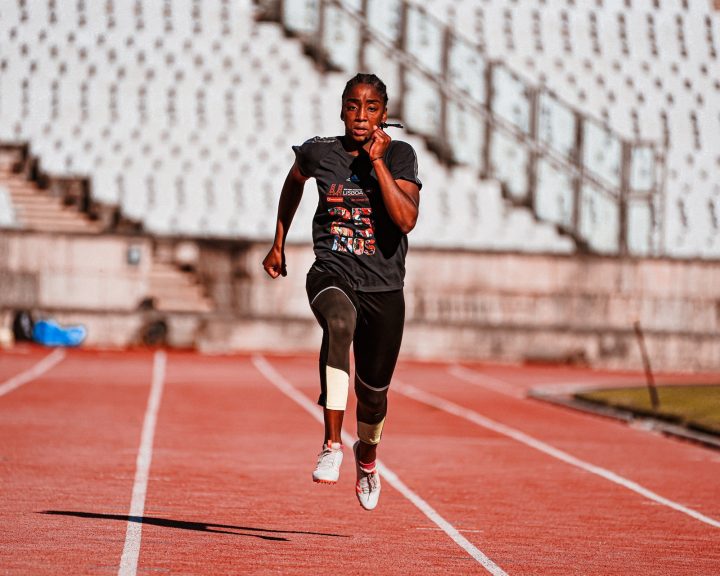I’m going to begin this post by showing a workout:
| WK 1 | WK 2 | WK 3 | WK 4 | WK 5 | WK 6 | WK 7 | WK 8 | |
| Power clean | 3x3x200 | 3x3x200 | 3x3x200 | 3x3x200 | 3x3x200 | 3x3x200 | 3x3x200 | 3x3x200 |
| Clean Pulls | 3x6x230 | 3x6x230 | 3x6x230 | 3x6x230 | 3x6x230 | 3x6x230 | 3x6x230 | 3x6x230 |
| Back Squats | 3x8x340 | 3x8x340 | 3x8x340 | 3x8x340 | 3x8x340 | 3x8x340 | 3x8x340 | 3x8x340 |
| RDLs | 3x8x340 | 3x8x340 | 3x8x340 | 3x8x340 | 3x8x340 | 3x8x340 | 3x8x340 | 3x8x340 |
On the surface this is a great workout. It focuses on making the athlete stronger and more explosive. It’s also eight weeks long, so it has the potential to create some gains that can be harnessed in the next block of training. But, on closer look, there is a serious flaw – it’s the exact same workout every week. This kind of workout might have been difficult and might produce a training effect in the first week, but it won’t continue to do so by week eight.
The workout in the example violates a fundamental principle of exercise, which is that in order to continue making improvements we have to make the workouts more challenging over time. This is the overload principle.
Think about this. The body responds to exercise by doing several things. It may become more efficient about recruiting motor units; recruiting more of them, doing it more quickly, or preferentially recruiting fast-twitch motor units could do this. It may produce more anaerobic enzymes to assist with the generation of ATP. It may be done by increasing the size of muscle fibers. Most of these adaptations are expensive, that means they require more energy to support. This is why these adaptations disappear so quickly when we stop training, in other words we don’t need them any longer so why support them?
This means that in order to get the body to continue adapting we have to continue challenging the body. There are a number of ways to do this in a strength and conditioning program, not all of which are appropriate in every situation:
- Increase the weight
- Increase the volume
- Change the amount of rest
- Change the exercises
Increasing the weight:
Increasing the weight on the bar will make the exercises more stressful. For example, in the sample workout above, if we increased the weight on the back squat by five pounds every week the athlete would have to become stronger during the course of the eight weeks and would have had to develop larger muscles to support the weight.
The challenge is that you cannot do this indefinitely, there is a point where we all approach our genetic potential and it becomes much more difficult and takes longer to make even small gains in strength. In addition, the longer this is done the more there is a potential of injury from the amount of weight being handled. Remember, when strength and conditioning is being used to support sports then our two goals are to improve sports performance and prevent injury, not necessarily to lift as much weight as possible.
Increase the volume:
Performing more repetitions or more sets will make the training sessions more difficult. For example, the back squats could have added two repetitions each week (week one 3×8, week two 3×10, etc.). This would require more anaerobic enzymes and more muscles mass to support. There are two challenges with this. First, it takes more time. This is a problem because the amount of time an athlete has to train is always finite. Second, it may develop the wrong qualities. For example, an American football player or a shot putter does not need to be doing squats for sets of 40.
Change the amount of rest:
Increasing or decreasing the rest between sets will change the training effect. By increasing the rest we have more time to recover, this lets us train with more weight, more repetitions, or both. This also means the workouts take longer (see above about finite training times). Decreasing the rest also makes the training sessions more intense. However, this reduces the amount of weight and the number of repetitions that can be performed (and fatigue impacts technique). This may not be what we want to train either.
Change the exercises:
For me, this is the best option for higher level athletes. Once you have your strength base, I think the best approach is to focus on an exercise for 4-8 weeks then switch to something similar. For example, back squats for 4 weeks. Then back squats with a pause at the bottom for 4 weeks. Then back squats with chains for 4 weeks. Etc.
Here’s the challenge. Doing this before the athlete has a solid strength and physical foundation is counter-productive.
So, there’s a progression here. For most athletes the following will work:
- Increase the weight.
- After that has been done, increase the repetitions from week to week until a goal number of repetitions has been reached.
- Once that has been done, increase the weight again.
- Increase the repetitions.
Periodically we can change the amount of rest. For example, for four weeks after the season we may want to do less eight, more reps, with little rest.
Once athletes are approaching their limits, it’s time to begin changing the exercises. This would look like:
- Change the exercises
- Increase the weight
- Increase the repetitions
- Change the exercises



